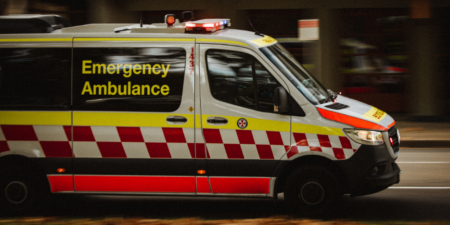In an emergency situation, it can be difficult to keep a clear head. Here are some things to remember when calling 000.If you’ve never had to call 000 before, it can be difficult to know what to expect, especially in the middle of an emergency. The stress of the situation can also make some important pieces of information more difficult to remember.
What to expect
When you call 000, the first person you will speak to will be a Telstra operator. They’ll ask you if you need Police, Fire or Ambulance. They will also ask your location.
The operator will then transfer you to an emergency service operator who will ask you for more details about the situation. They will also ask for your address including the nearest cross street, so try to have this information on hand.
If you are calling from a rural property, you will need to provide the full address of the property as well as distances and directions from nearby roads and landmarks.
If you are calling from a motorway or rural highway, you will also be asked which direction you’re travelling and the last exit or town that you passed.
The operator will then ask you about the emergency. If you are calling for an ambulance, they may ask what happened to the sick or injured person, whether they are bleeding, whether they are breathing normally, etc. Try to be as clear as possible answering these questions. They will need you to stay with the injured person while you are on the phone.
If you have another person with you (aside from the sick or injured person), send them outside to make sure your property number is visible from the street, and to make sure any gates or doors are unlocked. You’ll also be asked to secure any pets.
Stay on the line until the operator tells you it is ok to hang up.
If you are at a public venue like an RSL or leisure centre, ask one of the employees to call for you. They’ll know the cross streets and all the other essential info.
If you have a hearing or speech impairment and use a text phone, you can call 106 instead of 000 to access a text-based emergency service line.
If you’ve never had to call 000 before, it can be difficult to know what to expect, especially in the middle of an emergency. The stress of the situation can also make some important pieces of information more difficult to remember.
What to expect
When you call 000, the first person you will speak to will be a Telstra operator. They’ll ask you if you need Police, Fire or Ambulance. They will also ask your location.
The operator will then transfer you to an emergency service operator who will ask you for more details about the situation. They will also ask for your address including the nearest cross street, so try to have this information on hand.
If you are calling from a rural property, you will need to provide the full address of the property as well as distances and directions from nearby roads and landmarks.
If you are calling from a motorway or rural highway, you will also be asked which direction you’re travelling and the last exit or town that you passed.
The operator will then ask you about the emergency. If you are calling for an ambulance, they may ask what happened to the sick or injured person, whether they are bleeding, whether they are breathing normally, etc. Try to be as clear as possible answering these questions. They will need you to stay with the injured person while you are on the phone.
If you have another person with you (aside from the sick or injured person), send them outside to make sure your property number is visible from the street, and to make sure any gates or doors are unlocked. You’ll also be asked to secure any pets.
Stay on the line until the operator tells you it is ok to hang up.
If you are at a public venue like an RSL or leisure centre, ask one of the employees to call for you. They’ll know the cross streets and all the other essential info.
If you have a hearing or speech impairment and use a text phone, you can call 106 instead of 000 to access a text-based emergency service line.
